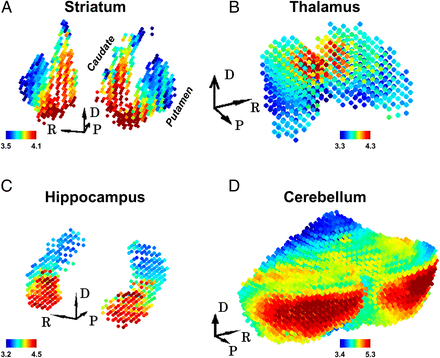Friday, 26 November 2021
Study on the intrinsic, dynamic activity of the brain confirms a very general principle of its organization
 Scientists have known for some time that for our brains to perform any given task, a very short-term sensory memory function must co-operate with some of our longer-term memory functions. Scientists have also known that such encoding on various time scales is correlated with the frequencies at which the neurons oscillate in the associated parts of our brain, ranging from high frequencies in the sensory cortical areas to very low frequencies in the multi modal associative areas. But in an article entitled Hierarchical dynamics as a macroscopic organizing principle of the human brain, published in the journal PNAS in August 2020, authors Ryan Raut, Abraham Snyder and Marcus Raichle showed that this important principle can be generalized not only to the entire cortex, but also to several sub-structures within it. Throughout all of them, the temporal profile of the spontaneous oscillations in the brain seems to be structured along gradients starting in the high-frequency sensory areas and proceeding to multi modal, higher-function areas where the oscillation frequencies are far lower. (more…)
Scientists have known for some time that for our brains to perform any given task, a very short-term sensory memory function must co-operate with some of our longer-term memory functions. Scientists have also known that such encoding on various time scales is correlated with the frequencies at which the neurons oscillate in the associated parts of our brain, ranging from high frequencies in the sensory cortical areas to very low frequencies in the multi modal associative areas. But in an article entitled Hierarchical dynamics as a macroscopic organizing principle of the human brain, published in the journal PNAS in August 2020, authors Ryan Raut, Abraham Snyder and Marcus Raichle showed that this important principle can be generalized not only to the entire cortex, but also to several sub-structures within it. Throughout all of them, the temporal profile of the spontaneous oscillations in the brain seems to be structured along gradients starting in the high-frequency sensory areas and proceeding to multi modal, higher-function areas where the oscillation frequencies are far lower. (more…)
From the Simple to the Complex | Comments Closed







